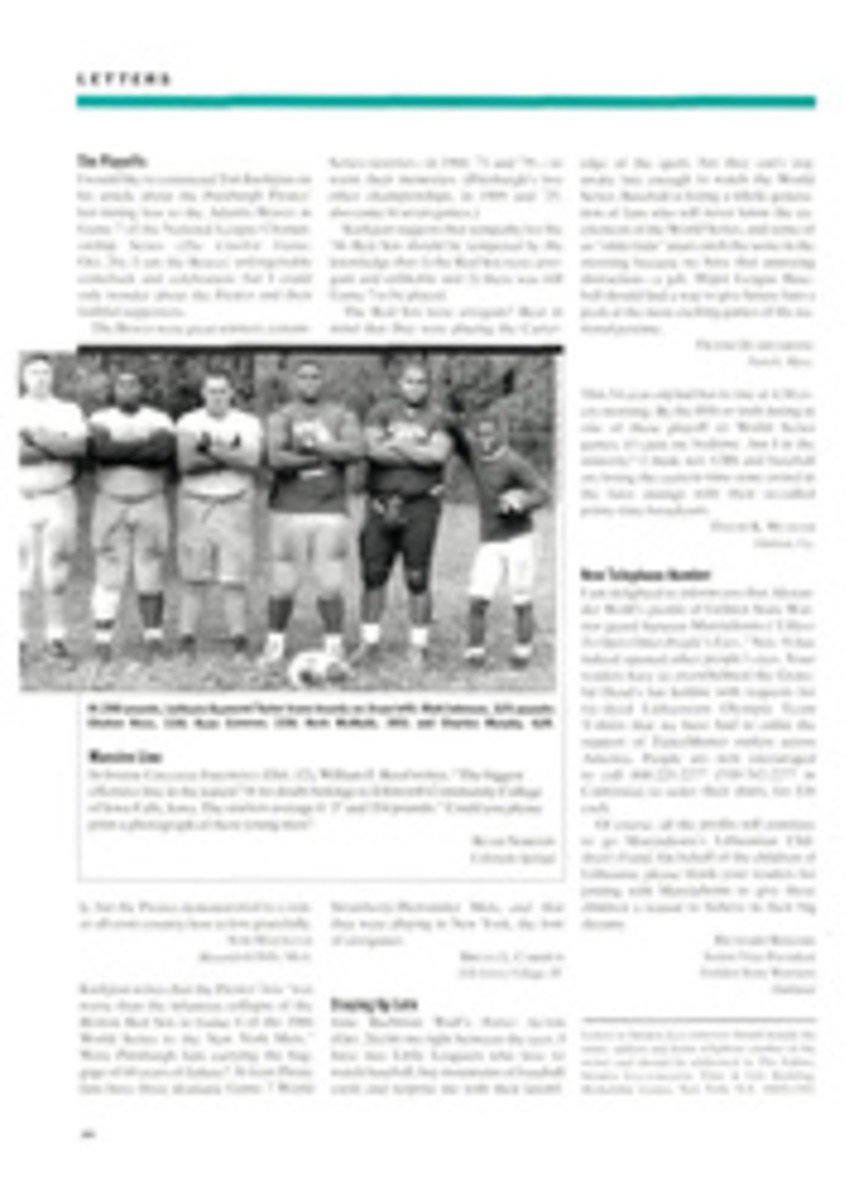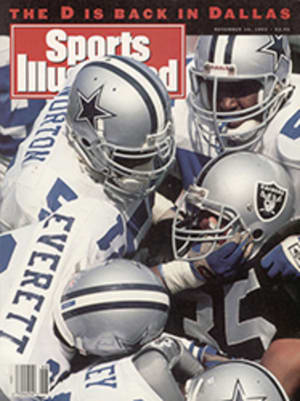
The Best Pinball Player in the World
You hear Rick Stetta's Trailer even before you see it. Electronic beeps and whistles emanate from his triple-wide mobile home in the Cape Cod Trailer Court and float southward toward downtown Sunnyvale, Calif. Around the trailer there's an explosion of sound and light as 18 pinball machines—nine in the family room, seven on the patio and two in the bedroom—compete for your attention. And pacing back and forth amid the din is Stetta himself, the best pinball player in the world.
"I'm trying to stay as calm as possible," says Stetta, flashing his wife, Barbara, a panicked look. "But this is the single most important event of my life—I've been preparing for 20 years." It's late January, a few days before the Professional and Amateur Pinball Association (PAPA) International Pinball Championships are to be held in New York City, and Stetta, 31, is on the verge of making history. Having already won the International Flipper Pinball Association's World Pinball Championships and the Pinball Expo's Flip Out, held in March and October, respectively, in Chicago, he's attempting to become the first person to take pinball's triple crown.
And damned if Stetta doesn't look somewhat pinballish: legs as skinny as the ones holding up his machines, hands that twitch like flippers, eyes as big and shiny as the games' eight-ounce steel balls. He's as close as one can get to being a pinball celebrity, and when he and Barbara arrive two days later at the Manhattan Sheraton Hotel for the PAPA tournament's qualifying round, everyone in the room turns to stare. When he is announced by Steve Epstein, founder and president of PAPA, as "the man to beat," Stetta turns bright red. And when the games begin, his nervousness appears to have eclipsed his skills.
In the one-day qualifying round each entrant must play eight different pinball games; the 16 highest total scorers advance to the finals. Top players consistently hit 10 million points per game, but in the qualifying Stetta begins to drain—that's pinball lingo for losing balls—at an alarming rate. He wins only three million points on the Surf'n Safari game, two million points on Star Trek. And there's some serious draining on Hurricane. "I'm dying." he whispers to Barbara.
The Addams Family, it seems, is one of the last games left between Stetta and pinball ignominy. He takes a few long strides up to the machine, wipes his hands on his jeans and pulls the plunger. The pinball game lights up like a miniature disco, the familiar Addams Family theme song—complete with electronic finger-snapping sounds—blares through its speakers, and Stetta begins to play.
Playing, however, is probably the wrong word for what Stetta does. Most people stick quarters in a machine, bang the ball around for a few minutes and hope for a free game. You know, play. Things are a tad different with Stetta. As the ball ricochets around the playfield, Stetta bounces with it, hopping from one leg to the other, slapping the flipper buttons open-palmed, shouting, twisting, pirouetting, grimacing. One moment he's on his tiptoes, the next he's down on his knees. His head bobs back and forth, he does quick stretches while the ball is in motion, he forms guns with his fingers and "shoots" the machine after especially high-scoring moments. No, Stetta doesn't play pinball. He performs it.
As he puts on his show, the rest of the competitors (there are more than 300 vying for the $1,500 first prize) gravitate to The Addams Family machine. After five minutes of frenzied multiball—three balls in play at once—Stetta nails the Triple Super Jackpot, and the audience bursts into applause. It's a 50-million-point shot, and even the machine seems to need a moment to catch its breath; there's an instant of silence before a lion roars loudly and the scoreboard lights up with fireworks.
His total for the game is 349 million points. With that, a spot in the finals is guaranteed.
Stetta is perhaps the first and only reasonably well-known pinball bum. He grew up in San Jose and began playing at age 10 when his mother tried to make him take bowling lessons but he refused to go farther than the bowling-alley arcade. "I was like most young boys: I wanted to be champion of the world in something," recalls Stetta. "Though, unlike most, I chose pinball. The game provides the perfect balance between physical and mental exertion, and when I was 15, I dedicated my life to it."
Instead of attending college, he played pinball. Instead of pursuing a career, he has worked at several 7-Elevens and Taco Bells as well as at the local supermarket—and played pinball. Now a single game can last him hours. He often finds himself stuck in endless games, in which he racks up so many free balls that he can't possibly use them all, so he simply turns the machine off. He often dreams of Xenon, a robot that appears in one of his favorite games. And his parents, not surprisingly, have had difficulty accepting pinball as a career choice.
"My goal was to prove I am the best player ever," declares Stetta, "even if I had to settle for just knowing it myself." He proved it, all right, but despite being the most successful pinballer of all time, he has won only $2,125 in cash and $6,000 in prizes in his 16-year career. Oh, and he has also won several pinball machines. Has it all been worth it? "No doubt about it," he says without hesitation.
Whereas Stetta has pursued his goal with extraordinary single-mindedness, pinball's path has followed a more circuitous route. The game's origins can be traced back to the 17th century and a French game known as bagatelle. The modern game first became popular in the early 1930s, with a table game called Baffle Ball. Pinball enjoyed some success but soon fell into disrepute when some machines began offering cash payouts. Targeted as gambling devices, pinball machines were banned by New York City in 1941; to show his disdain for pinball, Mayor Fiorello La Guardia whacked several machines with a sledgehammer and dumped them in the East River. Other major cities also banned the game. Pinball remained illegal in New York City until 1976, after which it enjoyed a brief upswing, until its popularity was eclipsed by video games in the early '80s. Pac-Man did as much damage as La Guardia, and once again pinball was in the doghouse.
But about five years ago the video audience began to tire of memorizing game patterns and of being at the mercy of the computer. Many discovered the relative freedom—some players call it the Zen—of pinball, and the game's popularity returned by 1991. The current resurgence has led to the formation in the U.S. of pinball leagues as well as professional tournaments, which draw players from as far away as Europe, Japan and Australia.
The day after the qualifying round, the finals of the PAPA contest begin in Manhattan's Lone Star Roadhouse. The Lone Star is abuzz with nervous whispers about pinball strategy, technical discussions about how to most effectively nudge the machine and horror stories about faulty flippers and cruel bumpers. In one corner of the room a few players lament the recent trend toward score inflation; it has been a sore issue since Bride of Pinbot came out two years ago with the first billion-point shot. At the other end of the room a debate rages over what percentage of a player's score is skill and what percentage is luck; the consensus is about 25% luck.
One thing, however, is perfectly clear: The final 16—all men, most in their mid-20's—are a serious bunch of pinballers. All of them unabashedly refer to themselves as athletes, most are certain that pinball will soon become an Olympic event, and a few have designed their own padded pinballing gloves. Stetta has even gone so far as to create a special pinball diet: sprouts, grains, nuts, fish, tofu and water.
Narrowing the field from 16 to four requires five hours of all-out pinball, and the championship round proves that there is no single correct way to play. Rob Rosen-house, 27, a video-store manager from Morris-town, N.J., listens to his Walkman as he shoots, his feet planted squarely on the ground, his hips swiveling like those of a Hula-Hooper. Lyman Sheats, 26, a software developer from Wayland, Mass., stands with one foot atop the other, hunched awkwardly over the machine. William Law, 23, a travel agent from Manhattan, is virtually motionless. And Stetta, of course, is Stetta.
In the qualifying round Stetta seemed to be doing calisthenics as he played, but in the finals it's full-bore acrobatics, his hands a blur as they pound the flipper buttons, his feet jitterbugging to an out-of-control beat. And when the last ball drains, the tournament, and the triple crown, are his.
A final fanfare sounds from the game's speakers, and Stetta rejoices, wiping off his forehead and hugging his wife. Then, with a solemn look on his face, he turns his back on the crowd and methodically enters his initials, RJS, into the pinball machine.
PHOTO
MARK RICHARDS
Stetta shares his home with 18 pinball machines, nine of which are in the family room.
PHOTO
GLENN WHITE/BROADCAST ARTS
At the championships, players agreed that one's pinball score is about 25% luck.
Michael Finkel, who lives in New York City, is an editor at Skiing Magazine.

